Maxta maximizes the promise of hyper-convergence for Disaster Recovery
Hyper-convergence creates new opportunities for more cost-effective Disaster Recovery solutions. In addition to reducing the amount of physical recovery infrastructure required, Maxta software-defined storage solution provides the flexibility to use any backup or replication software to replicate the data from the production site to the Disaster Recovery (DR) site. Since replication is at VM-level granularity, it is very simple and easy to test DR strategies, and to recover data in case of unplanned outages. Replication at VM-level granularity enables data recovery time to be significantly shorter than traditional solutions.
Maxta software-defined storage enables hyper-convergence on any standard x86 server and runs on any type of server-side storage device—providing substantial CAPEX savings. Additionally, Maxta integrates with existing infrastructure and can be used to eliminate the need for more costly storage arrays. Additional OPEX savings are also achieved through lower power and cooling requirements, and from the simplification of storage management. Maxta’s VM-centric solution is managed with the hypervisor framework, dramatically reducing complexity by eliminating the need for a separate storage management console and training.
Without compromising data services, Maxta software-defined storage delivers time/performance/capacity-efficient snapshots and zero-copy clones. Thin provisioning, inline compression, and inline deduplication are included, allowing companies to maximize their storage capacity. The ability to scale up and scale out provides the agility to easily grow as storage requirements change. Local mirroring and local replication, along with support for storage metro cluster, provide additional levels of resiliency and high availability.
For your virtualized environments, Maxta storage is an ideal solution to maximize your Disaster Recovery infrastructure. Maxta software-defined storage delivers shared storage, data availability, simplified VM-centric recoverability, and management—all with significant cost savings.


 Maxta Introduces VMware Escape Pod
Maxta Introduces VMware Escape Pod


